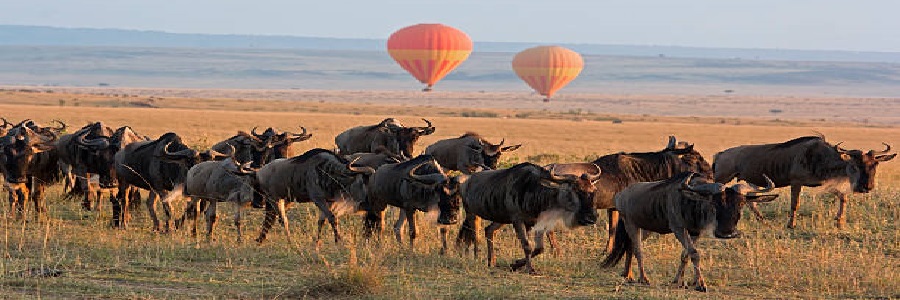
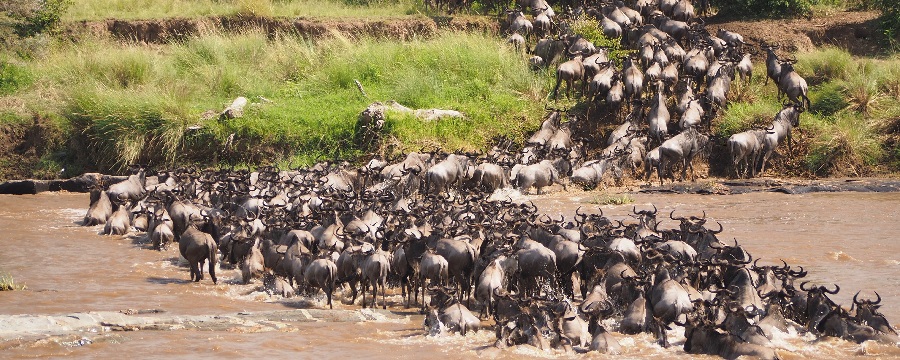
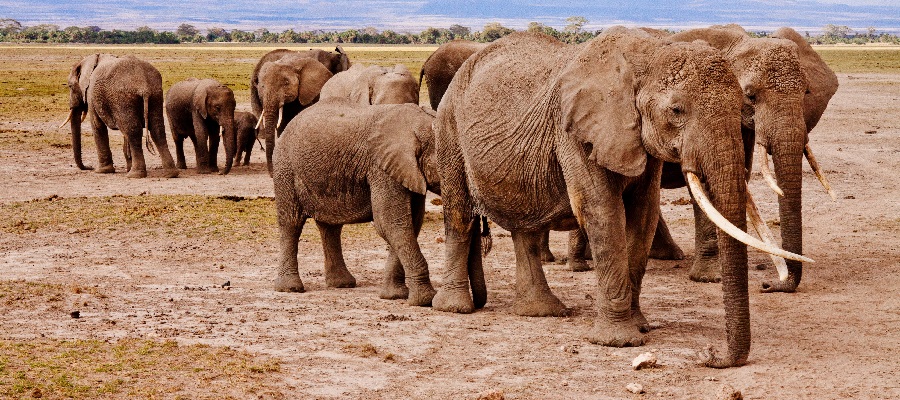
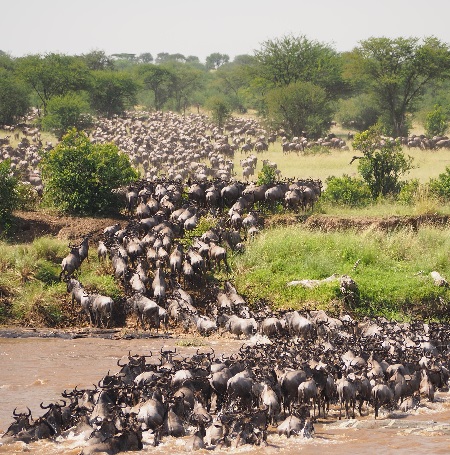
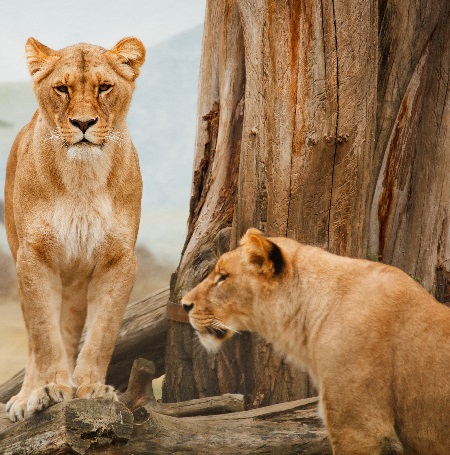
This Serengeti wildebeest migration is one of the most remarkable natural phenomena in the world where over 2.5 wildebeests migrate along with zebras and gazelles in search of green pastures. Visiting the Serengeti during the wildebeest migration offers an unforgettable African adventure and the chance to witness one of nature's most extraordinary events. Here are the top 10 interesting facts about wildebeest migrations:
1. Massive herds of migrating animals
The Serengeti wildebeest migration involves the movement of over 2.5 million wildebeest, along with hundreds of thousands of zebras and gazelles. It is considered the largest land animal migration on Earth.
2. Continuous cycle
The migration is a continuous cycle that takes place throughout the year, as the animals follow the seasonal rainfall and search for fresh grazing lands. They move in a circular pattern between the Serengeti National Park in Tanzania and the Masai Mara Reserve in Kenya.
3. River crossings
One of the most dramatic events during the migration is the river crossings, particularly the Mara River. The wildebeest gather in huge numbers and brave the crocodile-infested waters, often resulting in thrilling and tense encounters.
4. A year-round spectacle
While the great migration is the most famous, there are still significant numbers of wildebeest present in the Serengeti throughout the year. Even during the off-peak seasons, witnessing the vast herds and the diversity of wildlife in the area is a rewarding experience.
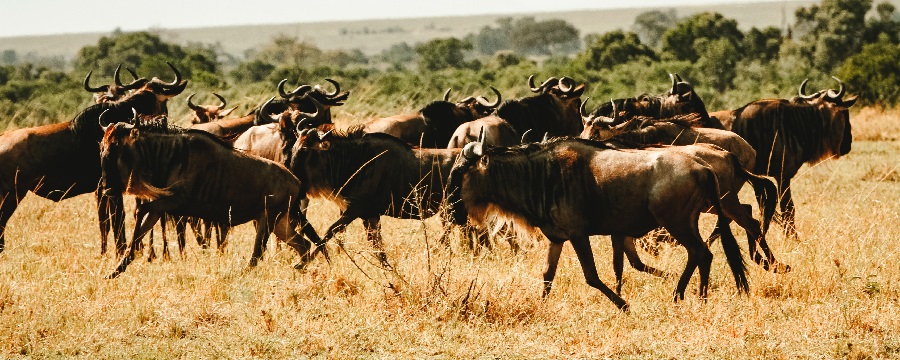
5. Births and calving season
The migration coincides with the calving season, which takes place in the southern Serengeti between January and February. Over 500,000 wildebeest calves are born during this time, attracting predators and offering incredible opportunities for wildlife enthusiasts.
6. Conservation efforts
The Serengeti wildebeest migration is a UNESCO World Heritage site, and conservation efforts are in place to protect the ecosystem and the wildlife. The governments of Tanzania and Kenya, along with various organizations, work together to ensure the sustainability of the migration.
7. Ecosystem impact
The migration plays a crucial role in the Serengeti ecosystem. The continuous grazing of the wildebeest helps maintain the grasslands and prevents the encroachment of shrubs and trees. Additionally, their droppings provide essential nutrients to the soil.
8. Wildebeest calves run 2 minutes after being born
During the wildebeest calving seasons, an extra half-million newborn wildebeests are added to the African plains. These new calves are easy targets for predators, but wildebeest calves learn to run within two minutes of being born.
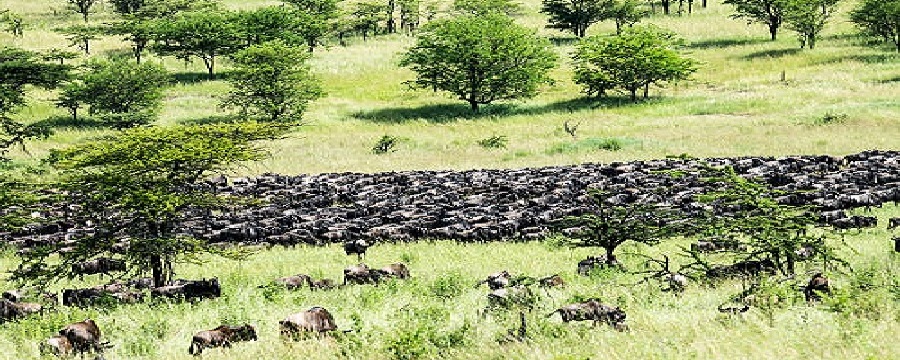
9. 4,500 tons of grass consumed every day
During the Serengeti wildebeest migration, millions of ungulates embark on a journey in search of survival and sustenance. Their primary goal is to find grass, consuming an astonishing amount of over 4,000 tons per day. This immense appetite showcases their determination to thrive in the face of adversity.
10. It's unpredictable
The Serengeti wildebeest migration safari is characterized by its unpredictability. Influenced by factors like rainfall and food availability, the timing and route of the migration vary annually. The wildebeest herds constantly move based on instinct, making the experience dynamic and exciting for observers. This unpredictable nature highlights the adaptability and resilience of nature's spectacle.
The best way to book the greatest wildebeest migration safari in Serengeti is to email us at sales@africanaturaltours.com or call us directly on WhatsApp at +255 764 415 889 to make safari trip reservations.
The best price for the greatest Serengeti wildebeest migration safari is from $1200 to $6000 per traveler; these costs vary depending on the number of days, the quality of the cheap, budget, semi-luxury, and luxury safari services.
The best time to visit the Serengeti for the greatest wildebeest migration safari is usually during the dry season from late June to October, where wildebeests migrate searching for green grasses. Also, the best time to see wildebeest calving is from late January to February in Ndutu area. Whether you're visiting Tanzania for the first time, understand that there are two distinct rainy seasons: April to May (the long rains) and November to December (the shorter rains).
